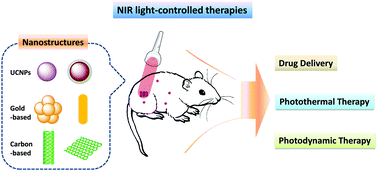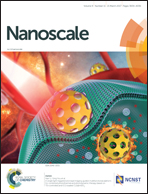Nanostructures for NIR light-controlled therapies
Abstract
In general, effective clinical treatment demands precision medicine, which requires specific perturbation to disease cells with no damage to normal tissue. Thus far, guaranteeing that selective therapeutic effects occur only at targeted disease areas remains a technical challenge. Among the various endeavors to achieve such an outcome, strategies based on light-controlled therapies have received special attention, mostly due to their unique advantages, including the low-invasive property and the capability to obtain spatial and temporal precision at the targeted sites via specific wavelength light irradiation. However, most conventional light-mediated therapies, especially those based on short-wavelength UV or visible light irradiation, have potential issues including limited penetration depth and harmful photo damage to healthy tissue. Therefore, the implemention of near-infrared (NIR) light illumination, which can travel into deeper tissues without causing obvious photo-induced cytotoxcity, has been suggested as a preferable option for precise phototherapeutic applications in vitro and in vivo. In this article, an overview is presented of existing therapeutic applications through NIR light-absorbed nanostructures, such as NIR light-controlled drug delivery, NIR light-mediated photothermal and photodynamic therapies. Potential challenges and relevant future prospects are also discussed.



 Please wait while we load your content...
Please wait while we load your content...